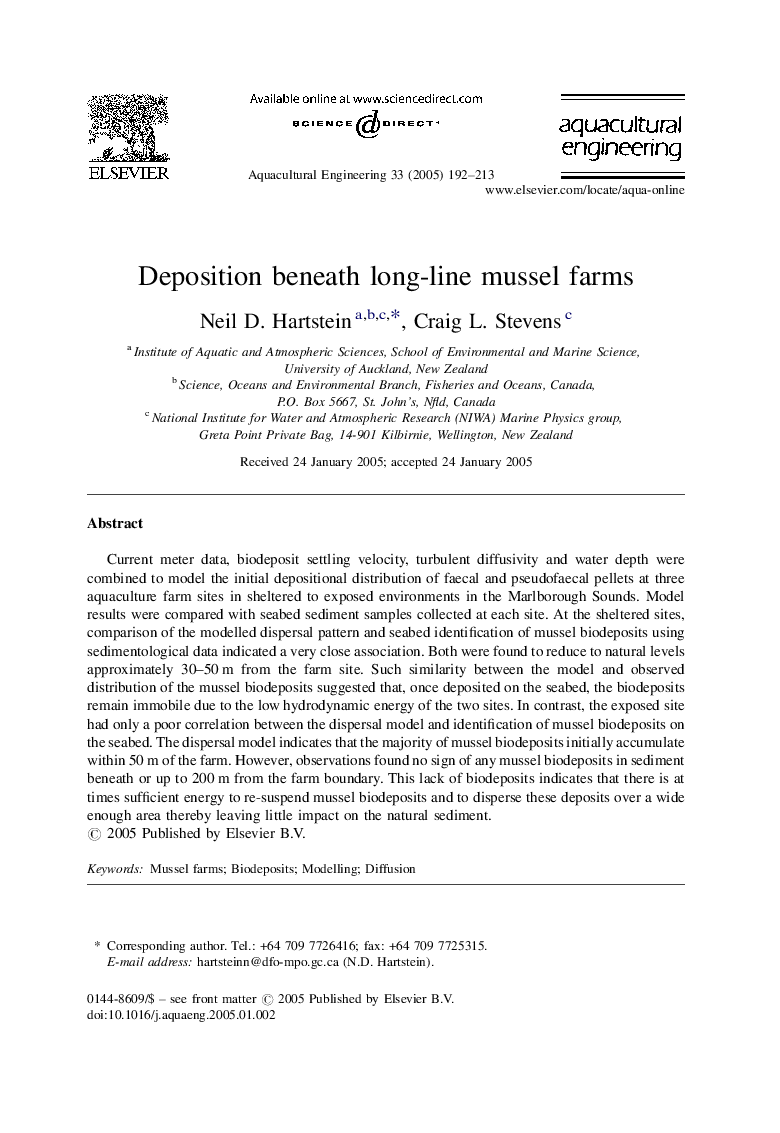| Article ID | Journal | Published Year | Pages | File Type |
|---|---|---|---|---|
| 9477374 | Aquacultural Engineering | 2005 | 22 Pages |
Abstract
Current meter data, biodeposit settling velocity, turbulent diffusivity and water depth were combined to model the initial depositional distribution of faecal and pseudofaecal pellets at three aquaculture farm sites in sheltered to exposed environments in the Marlborough Sounds. Model results were compared with seabed sediment samples collected at each site. At the sheltered sites, comparison of the modelled dispersal pattern and seabed identification of mussel biodeposits using sedimentological data indicated a very close association. Both were found to reduce to natural levels approximately 30-50Â m from the farm site. Such similarity between the model and observed distribution of the mussel biodeposits suggested that, once deposited on the seabed, the biodeposits remain immobile due to the low hydrodynamic energy of the two sites. In contrast, the exposed site had only a poor correlation between the dispersal model and identification of mussel biodeposits on the seabed. The dispersal model indicates that the majority of mussel biodeposits initially accumulate within 50Â m of the farm. However, observations found no sign of any mussel biodeposits in sediment beneath or up to 200Â m from the farm boundary. This lack of biodeposits indicates that there is at times sufficient energy to re-suspend mussel biodeposits and to disperse these deposits over a wide enough area thereby leaving little impact on the natural sediment.
Related Topics
Life Sciences
Agricultural and Biological Sciences
Aquatic Science
Authors
Neil D. Hartstein, Craig L. Stevens,
